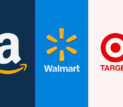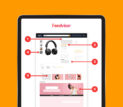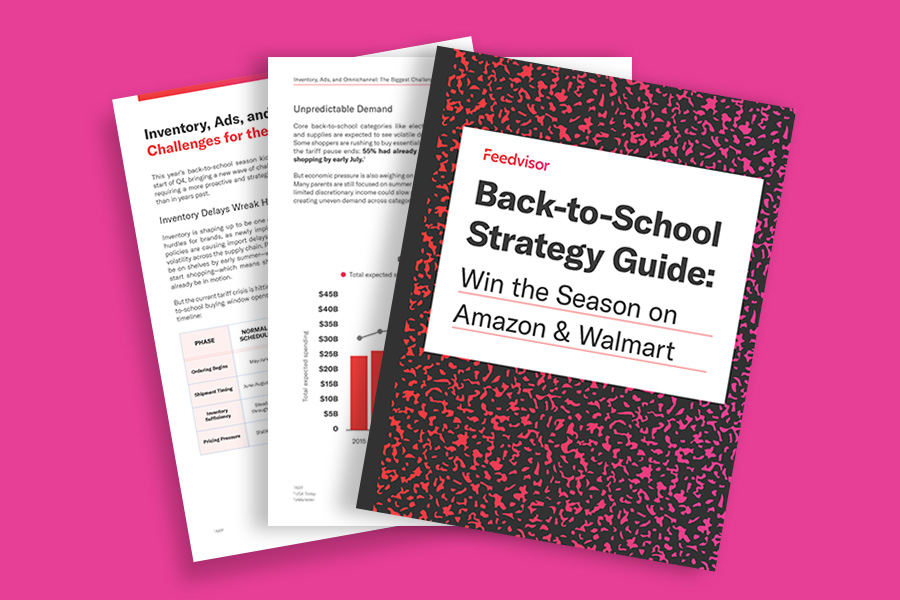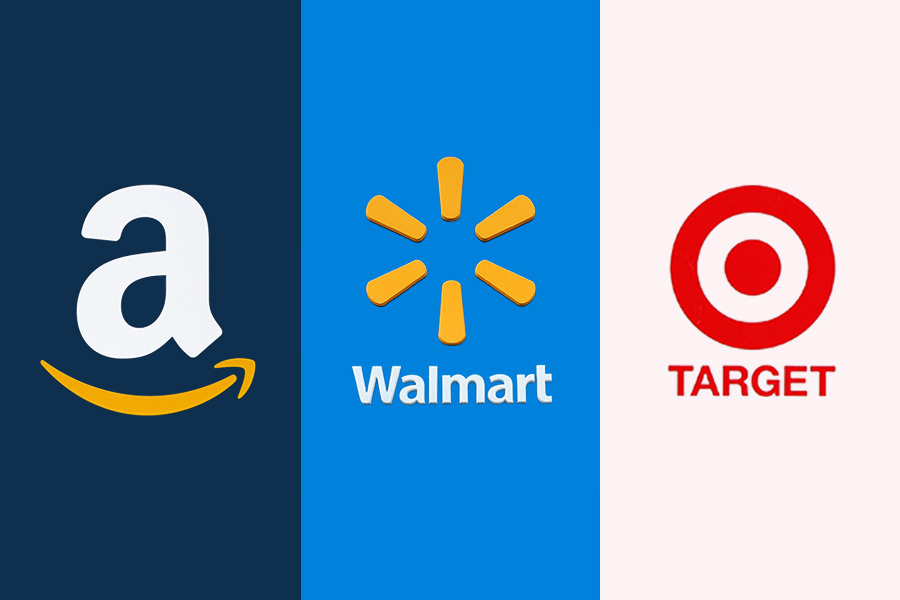
Categories
Latest Posts
Tags
Advertising Amazon Amazon Advertising Amazon Experts Amazon Listing Optimization Amazon Marketplace Amazon News Amazon Prime Amazon Professional Sellers Summit Amazon Seller amazon sellers Amazon Seller Tips Amazon Seller Tools ASIN Brand Management Brands Buy Box Campaign Manager Conference COVID-19 downloadable Dynamic Pricing Ecommerce FBA FBM Holiday Season industry news Multi-Channel Fulfillment Optimize pay-per-click Pricing Algorithm Pricing Software Private Label Profits Repricing Repricing Software Revenue Sales Seller Seller-Fulfilled Prime Seller Performance Metrics SEO SKU Sponsored Products Ads Strategy
Get the latest insights right in your inbox
Resource | Blog

Amazon Pricing Strategy: How Much Should You Sell a Product For?
A staggering number (82%) of consumers cited price as a very important factor when buying a product on Amazon. While price is a critical factor that influences product selection and consumer engagement, it is one variable amongst many that should be monitored regularly to achieve and maintain strong business performance. In this article, we provide insights on how private label sellers specifically can competitively price their products on the e-commerce platform.
Pricing Your Products on Amazon
According to Amazon, you can list items at “any price you feel is fair, regardless of the Amazon price or list price, within the limits set by Amazon, and so long as your price adheres to the parity requirements of your selling agreement and the policy on reference prices.” Below are some additional policies from Amazon regarding product pricing:
- Professional Sellers may not list a product for more than $300,000.
- You can supply a reference price, such as a list price like a manufacturer’s suggested retail price (MSRP) that may be displayed in various locations to show savings to shoppers.
- Reference prices must represent the price at which you or other sellers or retailers have recently made “substantial” sales of the given product. You also need to ensure that the reference prices you provide to Amazon are up to date. If your list prices do not meet these criteria, leave the field blank when adding a new product.
- The “Your Price” field should show the actual offer price you plan to give to customers and the “Sales Price” field should only be used when you are running a time-bound promotion.
- If Amazon cannot verify one of your reference prices, it may be suppressed. If you manipulate the “Sales Price” or “Your Price” fields to alter the reference price or Amazon cannot validate sales at the price, savings messaging may be removed from your Deal, your Deal may be canceled, or, with grave cases, selling privileges may come under fire.
- The aforementioned price limits to not apply to products in the “Collectibles” category. For more information on these products, search “collectibles” in seller help in Seller Central.
- The price you set for your product, known as the “item price,” excludes shipping and handling and represents the amount payable by a customer.
In addition to these rules, Amazon has a Marketplace Fair Pricing Policy that must be adhered to. If Amazon sees pricing practices on a product that can negatively impact customer trust, Amazon can remove the Buy Box, remove the offer as a whole, suspend the shipping option, or suspend or terminate your selling account. Be sure to avoid these pricing practices:
- Setting a reference price, such as an MSRP, that is misleading to customers
- Setting a price on a product that is significantly higher than recent prices offered on or off Amazon. In March 2019, Amazon removed the requirement that third-party sellers had to offer their lowest prices on Amazon, but many sellers are still operating by the price parity rule in fear that their account will be impacted as a result.
- Selling several units of a product for more per unit than that of a single unit of the same product
- Setting an excessive shipping fee on a product

A Solution for Every Seller, Starting at $100/mo!
Try Feedvisor’s Price Optimization Technology, built for private labels, resellers, brands, and sellers, FREE for 14-days!
Why Product Price Optimization Is Necessary
When it comes to setting product prices on Amazon, you can do so manually or with rules-based or sophisticated, AI-powered technology. Think about pricing as a way to win against every type of competitor, including both direct and indirect competition. If you are a private label brand selling a yoga mat, you might not be competing for the Buy Box on that specific ASIN, but you will have to price your product against your competitors selling similar yoga mats.
While both repricing technologies, algorithmic and rule-based, focus on driving sales volume, boosting profit margins, and improving Buy Box share, algorithmic repricers assess your entire competitive landscape over time, while rule-based ones do not. You will want to ensure that your pricing solution aims to predict how the hyper-competitive arena will evolve in the future and make more informed business decisions based on these predictions.
You will also want to ensure the following factors are considered in your pricing strategy:
1. Cost
If you use an automated pricing solution such as Feedvisor’s price optimization and intelligence platform, all you have to do is input your cost data and floor and ceiling price boundaries for each product. Amazon product cost data can include the raw cost of goods and any additional shipping costs, for example. You will have already set your minimum and maximum prices with Amazon, as that is a requirement to get your products listed.
2. Positioning
Have an idea of how you want to present your brand in the market and to customers, as the price will impact this. Some brands know they want to be a commoditized, lower-priced option rooted in price value, while other brands want to position themselves as a more luxury, high-quality option.
3. Demand
How do the prices you set and price changes that occur influence your demand? Brands and retailers on Amazon need a pricing solution that provides insights into your overall profitability and tracks demand changes. By using technology that maps relevant competition that may be taking share of sales, you can align the pricing strategy for each SKU according to your business objectives, such as revenue optimization or profit maximization.
4. Market Dynamics
At Feedvisor, we believe that dynamic pricing is key to e-commerce success. Dynamic pricing is a strategy in which product prices continually adjust in response to current market conditions and real-time supply and demand. Resultantly, you can use this strategy to be more aggressive in your target market, aiding relevancy and helping you gain market share from the competition. By using technology to continuously monitor and optimize prices on an ongoing basis, you can track how the price changes impact your sales demand.
Looking Ahead
Feedvisor’s “State of the Amazon Marketplace 2019” report found that 90% of sellers that leverage price optimization technology find it helpful, reinforcing the positive impact an automated solution can have on your workflows and productivity.
When establishing a pricing strategy and determining the most optimal prices and pricing technology for your Amazon business, it is important to have a clear outline of your business goals, know your product costs and any additional fees to take into account, and establish a holistic pricing strategy that works to generate incremental revenue and profits for your business.




